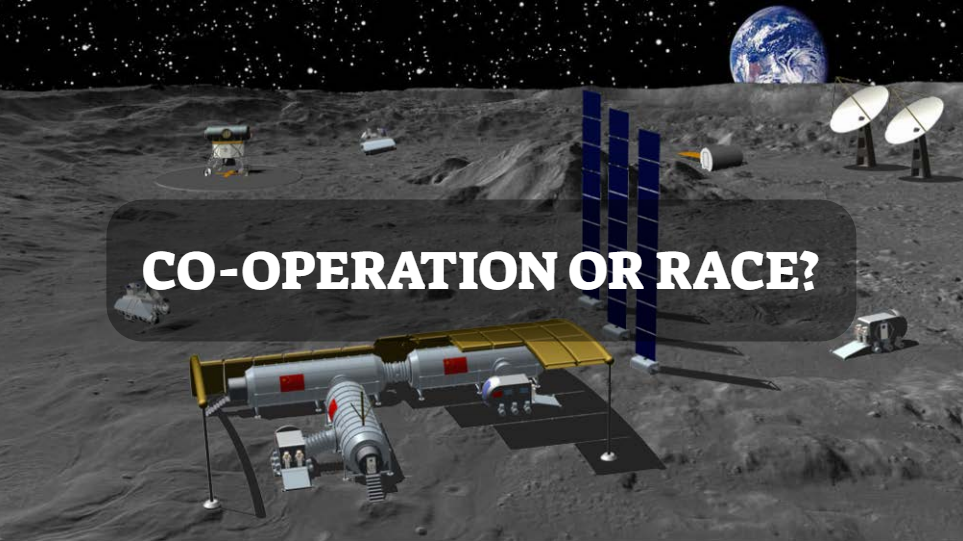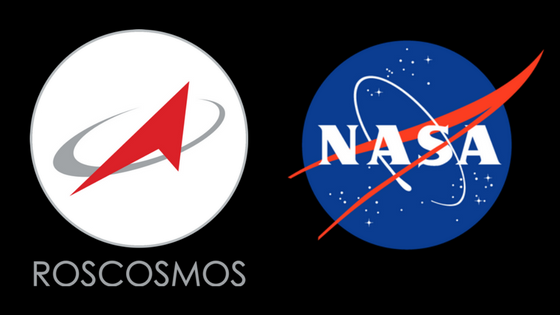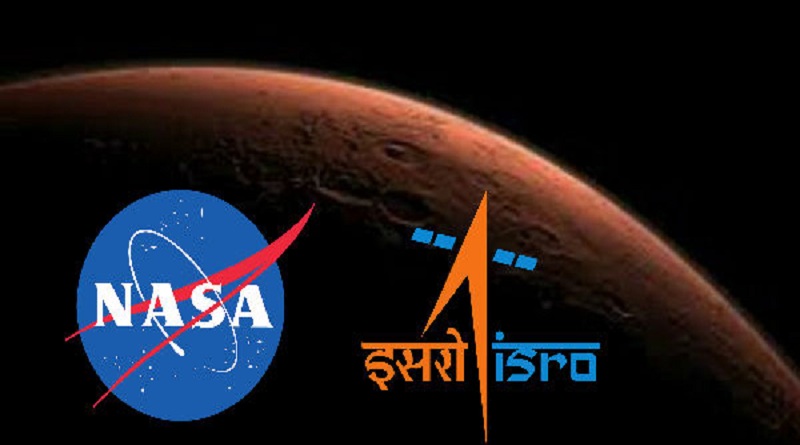
- The deal between Chinese and Russian space agencies for a lunar station shows the strained relations between NASA and Roscosmos
- Russia and China did not sign the NASA established the “Artemis Accords”, a series of bilateral agreements with various space agencies
- The latest Russia-China agreement for the same purpose is now seen as a counter to the US led lunar consortium.
- Another aspect which resulted in the Russia-China space partnership is strained relations between US and China.
- On the other hand, Indian, Japanese and European space agencies are joining hands for several joint missions.
- Alliances is a norm in deep space exploration but forming of different alliances for the same purpose may be a precursor to the ensuing ‘space race’.
On March 9, 2021, the heads of the Chinese and Russian space agencies signed an agreement to work together to build a station on the Moon. Under terms of a memorandum of understanding, the two countries will cooperate on creation of an “International Lunar Science Station” and plan to invite other countries to participate. The agreement was signed by Zhang Kejian, director of the China National Space Administration (CNSA), and Dmitry Rogozin, the chief of Russia’s space corporation, Roscosmos.
China has aimed to build an international lunar research station and was seeking international involvement in the project. In 2020, China declared that it has envisioned a project, named the International Lunar Research Station (ILRS), which is to be situated in the lunar south pole region. It will be developed through a number of upcoming robotic Chang’e missions across the 2020s and expanded through the 2030s.
China tie-up with Russia for the Lunar mission is in the same direction. However, Russia choosing China over the US for the lunar station is a significant development. The two nations have worked together for more than two decades on the construction and operation of the International Space Station. Both had in the past expressed their wish to establish a permanent station on the moon.
NASA in 2020 had said that it would like to establish a lunar base to assess the viability of the water resources at the South Pole. As part of this exploration plan, NASA established the “Artemis Accords” a series of bilateral agreements with space agencies in other countries that want to join the Artemis Program. Australia, Canada, Japan, Luxembourg, Italy, the United Kingdom, and the United Arab Emirates signed the US led accord. Russia and China were noticeably absent in signing on to these accords. Russia had criticized the Artemis Accords as too “US centric.”
This latest Russia-China agreement for the same purpose is now seen as a counter to the US led lunar consortium. This partnership for sure signals the strain in the relationship between NASA and Roscosmos if not the end of it. While it is not clearly known if European Space Agency (ESA) will prefer to ally with NASA or Russia, the agency is known for its proximity with the US than the Russian Space Agency. In fact, the ESA had held discussions with China with regards contributing to the Lunar station project, but nothing concrete has transpired thus far.

ESA had carried out the Double Star missions with China in the early 2000s and also assisted China’s Chang’e missions with ground station support. However, when China tested a new generation spacecraft for deep space crewed missions in May 2020, China preferred to take Russia’s help rather than ESA. On the other hand, Russia has invited the CNSA chief, Zhang Kejian, to the launch of Russia’s first modern lunar lander, Luna 25, scheduled for 1 October.
Another aspect which resulted in the Russia-China space partnership is strained relations between US and China. NASA has not had any direct negotiations with China as it is prohibited from doing so by Congress and the Wolf Amendment. On the other hand, relations between NASA and India’s ISRO have been growing since a decade. NASA and ISRO are partnering on building several satellites for deep space exploration and have collaborated on a Synthetic Aperture Radar project called NISAR for earth observation.

Further causing the rift between Russia and the US were the crewed flights to the International Space Station (ISS). In 2020, Russia lost its monopoly on crewed flights to the ISS after the first successful mission of the US company SpaceX. Elon Musk’s SpaceX has become a key player in the modern space race and has announced plans to fly several members of the public to the moon in 2023. It is a notable fact that the SpaceX moon mission is funded by a Japanese billionaire.
On the other hand, Indian and Japanese space agencies ISRO and JAXA have joined hands for a joint moon mission called ‘Lunar Polar Exploration’ mission which aims to bolster ties between India and Japan and counter the Chinese ambitions in outer space. ESA has plans for further collaboration with ISRO in various space missions apart from ESA’s Gaia satellite mission which is a multi-dimensional space probe.
Deep space exploration is an area which many countries are trying to get an upper hand in. Given the cost, technology and resources involved in the niche science sector, no country can afford to go it alone. Hence, an alliance has become a norm in deep space exploration. But the forming of different alliances for the same purpose may be a precursor to the ensuing ‘space race’.
The member countries of the alliances and their present political standpoint is a hint towards the future of space race. In all probability, the geopolitics on earth is bound to extend to outer space unless the differences between the nations are resolved here. It will be for the benefit of the entire humankind, that such alliances result in ‘space cooperation’ rather than a ‘space race’.
